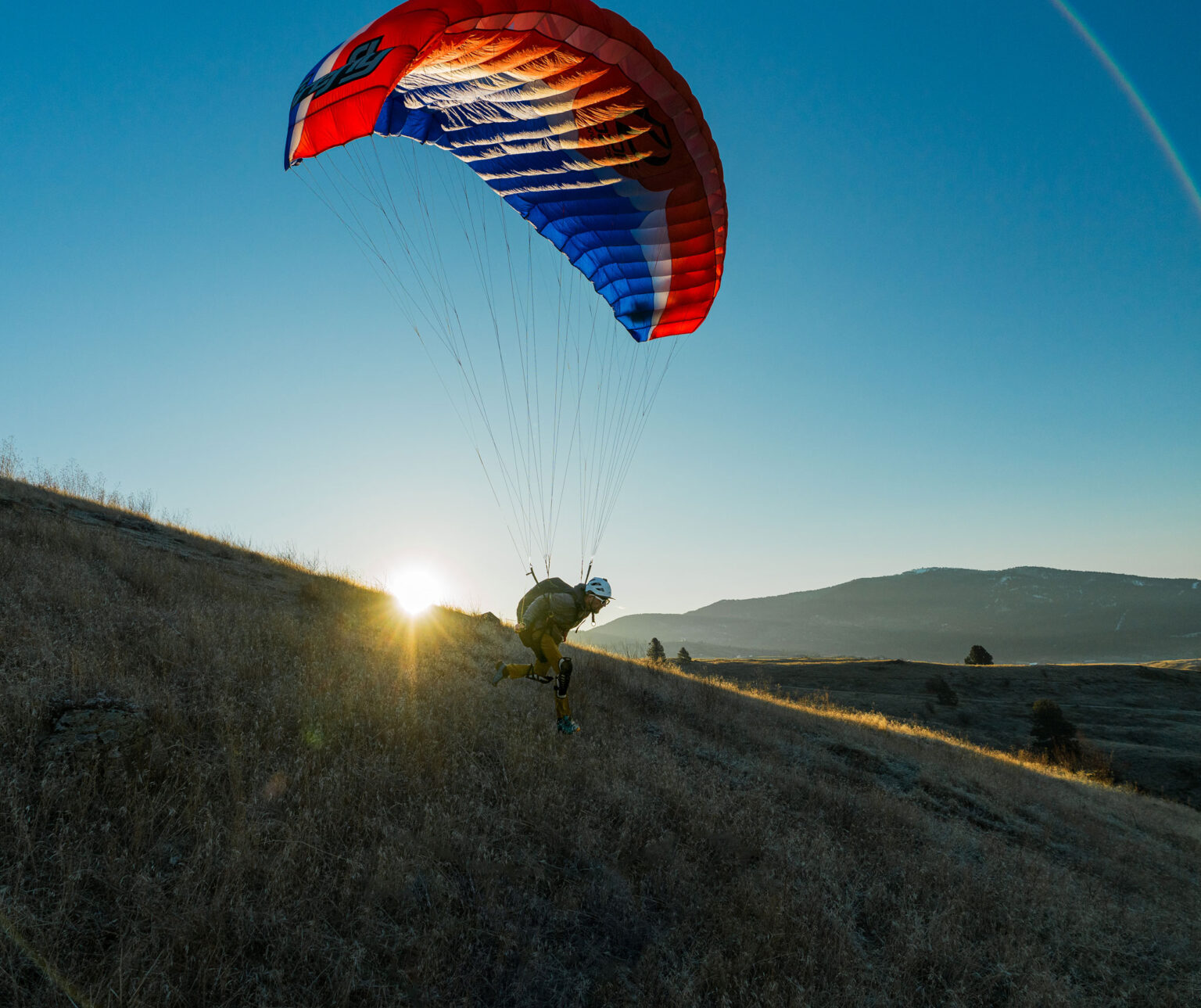Nobody enjoys waking up at 2:30 a.m.. The body tries to fight it at first, but on adventure days there’s always a nagging “something” that inserts itself into the barely kindled consciousness.
“I told Chris I would pick him up at 3:15.” I flopped out of bed and started coffee — the first ingredient for an “alpine start.”
The second ingredient is impending adventure, which is the very reason alpine starts exist. For those of you who have never experienced an alpine start, the gist is this: Be well into the adventure by the time the sun begins to lighten the sky. Some adventures simply require more hours than daylight. An alpine start is a matter of necessity. Today, however, our adventure would be completed well before noon. We were waking up several hours before dawn to catch a moment. Two minutes and 30 seconds,
actually.
In the mountains, there is a brief window in the morning where cool “katabatic” winds moving down slopeare canceled by warm “anabatic” winds moving upslope.
This is when speedflyers launch.
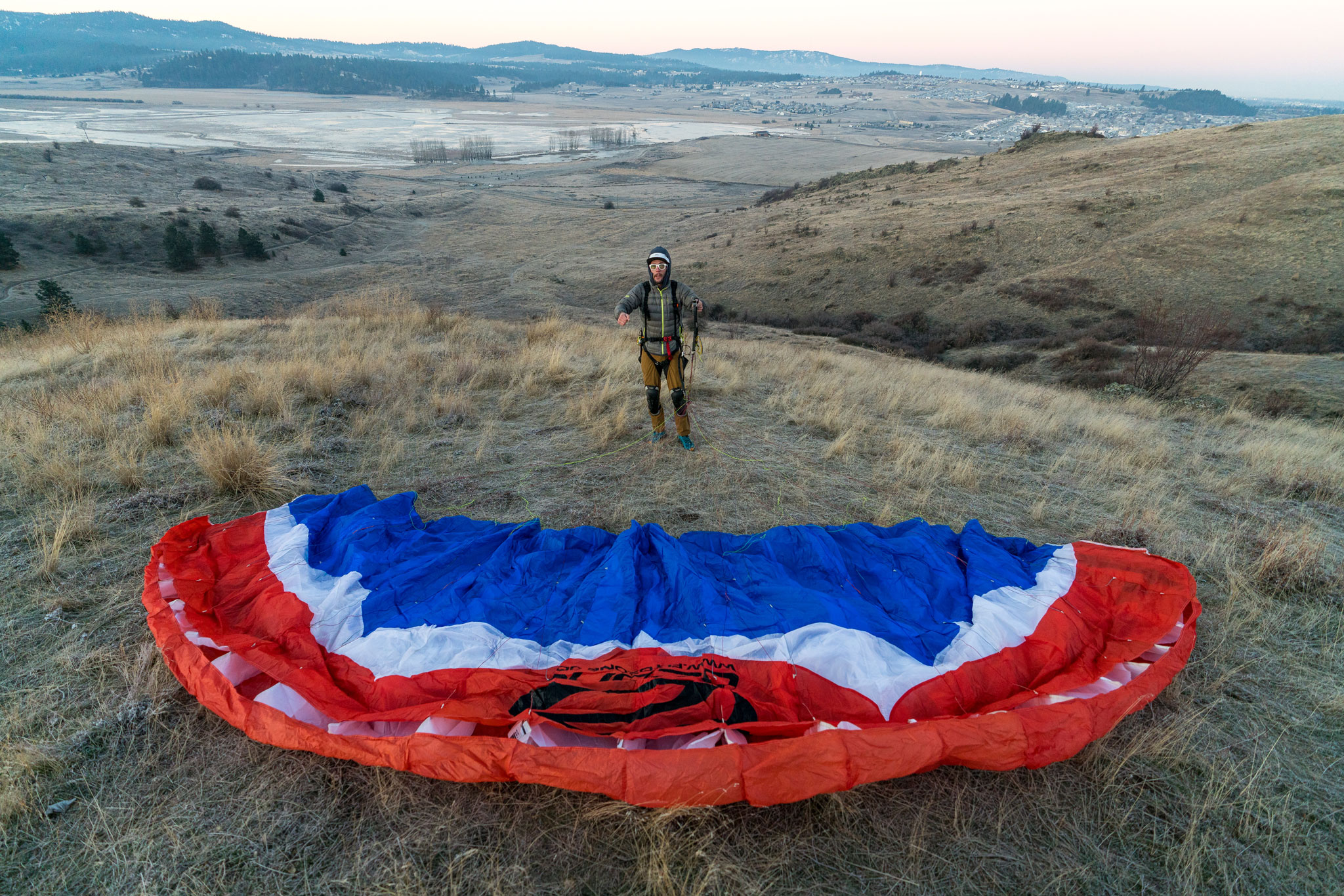
Chasing adventure
Chris Celentano and I have been adventuring together for a long time. Something like 14 years. We met at an Ironman competition where both of us were volunteering as safety boaters for the swim portion of the event. Chris in his sea kayak, me in my whitewater boat. He was interested in getting into whitewater and soon we were paddling the many rivers our area has to offer together.
Then we began rock climbing together, learning the craft and techniques of climbing on countless afternoons at Q’emlin Park in Post Falls. Climbing became an obsession of ours for many years. Life got busy, as it always does, and our bromance drifted into other things. Families were started, our interests diverged, but we’ve always come back together to adventure.
Chris began chasing after things like canyoneering and ice climbing and would often drag me along. I continued climbing rock with an obsessive appetite until I exhausted the level of danger I was willing to accept. On a scary multi-pitch climb in the North Cascades I began thinking to myself that I was probably done chasing adrenaline in the world of rock climbing. I began looking for the next thing.
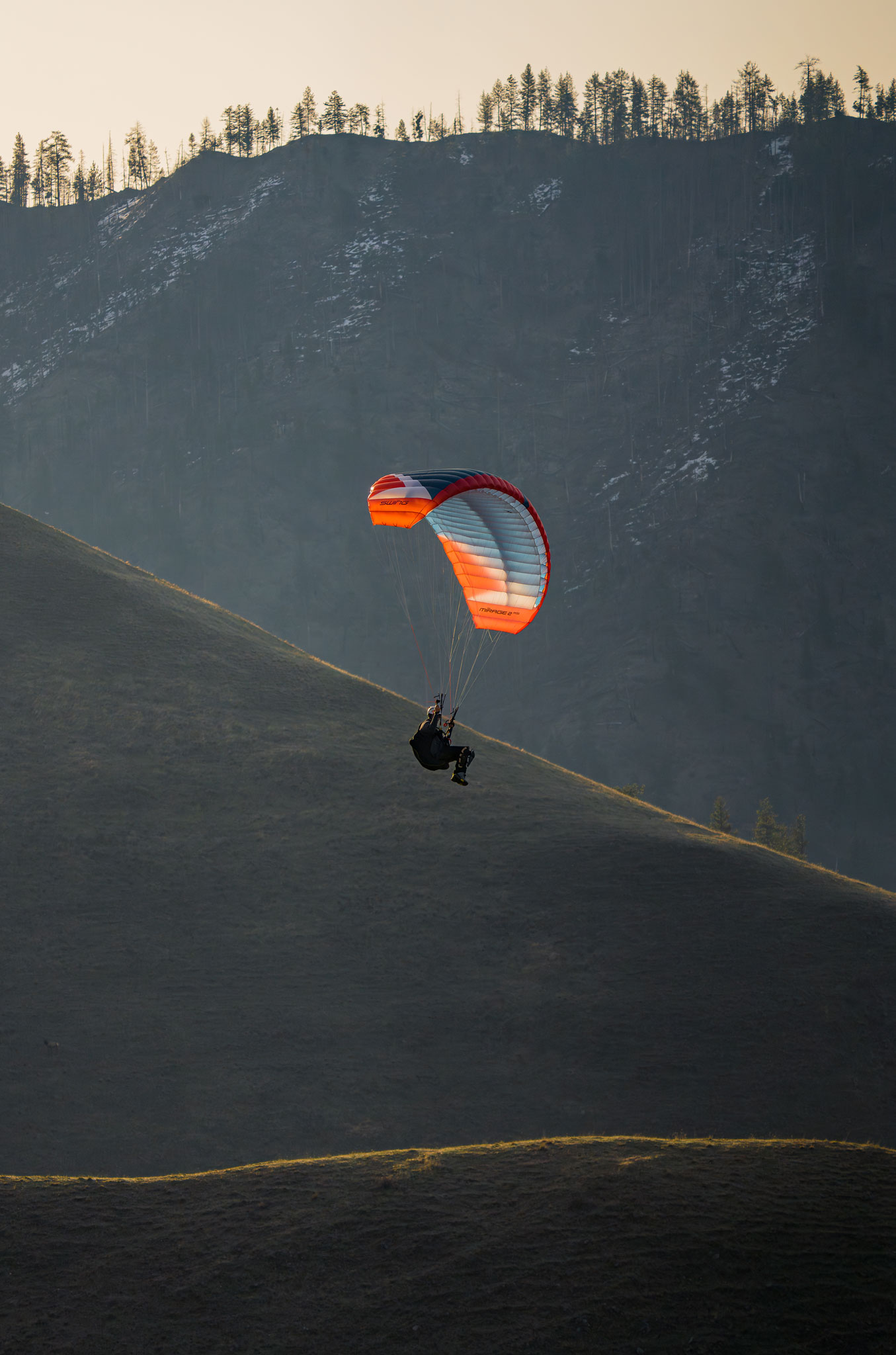
Discovering speedflying
I discovered something on YouTube that really got my heart beating. Over and over, I watched in awe people flying speedwings through tight canyons. I never considered doing it myself, but then life changed, and I decided I would just go for it. I saved all winter to take lessons the following spring in Chelan, Wash.
Fellow speedflyers often say that speedflying is to paragliding as BASE jumping is to skydiving. It’s a niche activity within the world of paragliding, which originated from skydiving. How I’ve heard it, some skydivers began pushing how far they could swoop their canopies as they came in for a landing. Canopies changed and soon some folks decided to skip the free fall portion altogether and foot launch their canopies off mountains instead. Speedflying was born.
Speedflying is foot launching a wing off a mountain and flying fast down the mountain to your landing zone, or LZ. Paragliders also foot-launch from mountains, but they seek out thermals to lift them higher, extending their flights, sometimes for hours. Speedflying is different in that the wings are much smaller and cannot generate lift. The progression of speedflying is to fly smaller and smaller wings closer and closer to the ground. This is why Chris and I were driving to Montana at 3 a.m. Speedflying is best done in no-wind conditions when the air is smooth, and flying close to the ground is less dangerous.
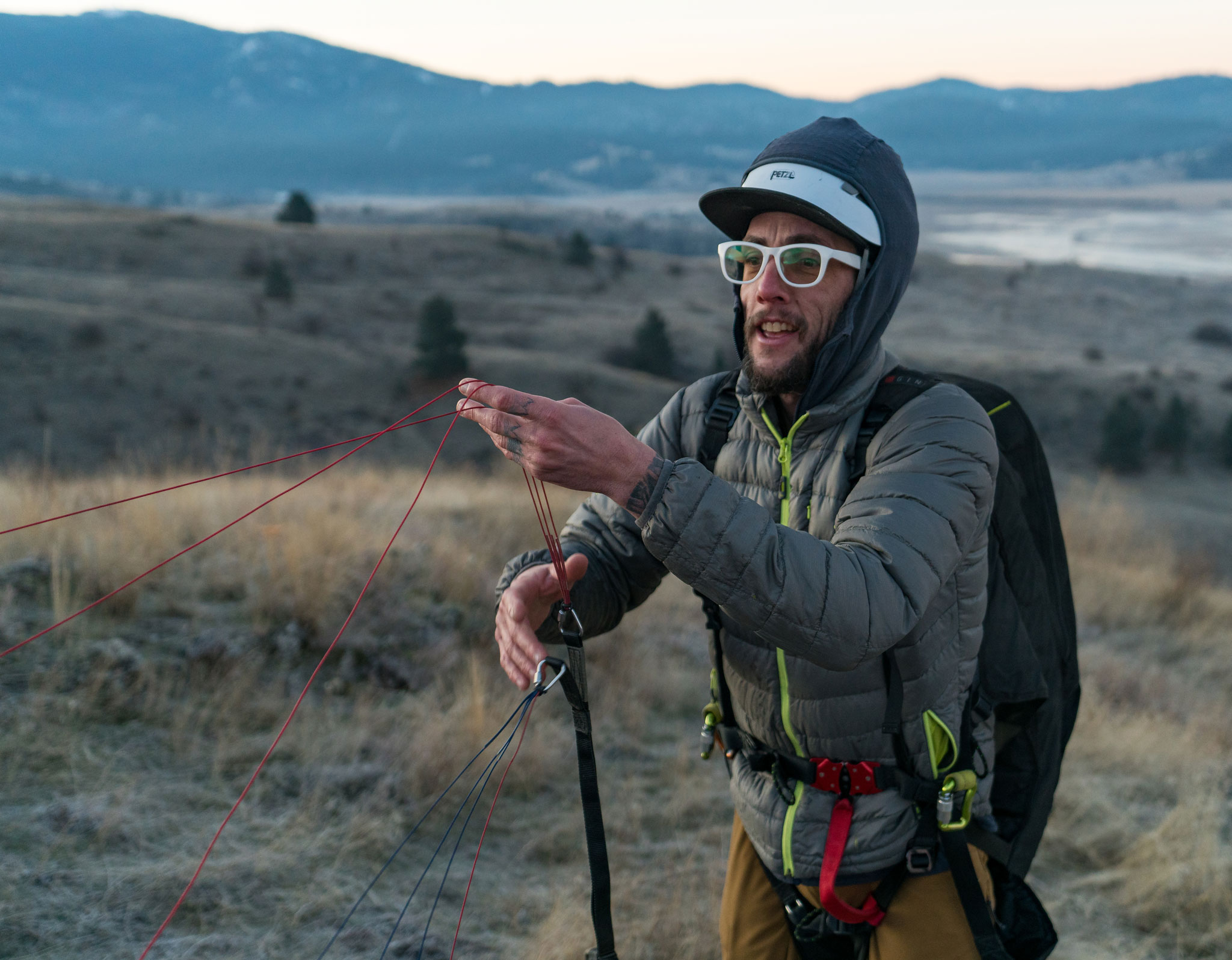
Once the sun begins heating up the valley floor, thermals begin to appear and create the conditions paragliders seek. Thermals also mean turbulence. And when you are racing down a mountain 20 feet above the ground, you don’t want turbulence, so speedflying most often occurs at sunrise before thermals form. Also, each launch site must have ideal conditions for flying. Speedflyers and paragliders alike spend massive amounts of time studying the conditions at a given launch site. In this instance, winds were forecast to be very light and out of the south with minimal gusting — ideal conditions.
Story continues after a brief message from our sponsor below
We reached the base of the mountain just as the sky began to turn shades of indigo over the far ridges. We took some moments while sorting gear to discuss the logistics of the morning, where I would launch, what my flight path would look like and where Chris should station himself to get the best photos. I knew from past flights that it would take an hour to hike the nearly 50-degree slope to the launch, 1,400 feet above us. As the sky continued to brighten, we started the slog up the mountain, the muscles in our legs at first resisting with indignation, then slowly easing into the task.

I’ve hiked this mountain about 15 times by myself, so I was excited to have Chris with me, even though he was just here to take photos. As we gained elevation we talked about our adventures and our families. Life is constantly evolving, and this is something Chris and I have always shared, the need to decompress in the mountains, exploring and challenging ourselves. I get almost philosophical about it. I have never found a better place to step back from the hustle and challenge of our everyday lives than in the vertical world.
Last fall, I was asked by a local resident not to fly this mountain during the winter and early spring as all the elk in the area congregated on the slopes to birth their young, eating the plentiful grass and enjoying the warmth that this south facing slope offered. I stayed away all winter until a few weeks ago, patiently biding the time until I could return. When I finally reached the mountain for the first time this spring, I saw that the herd of elk was still present. I chose not to fly from my usual launch but instead ascended a much smaller ridge well away from the herd.
I sat on top of this much lower neighboring ridge and counted something close to 150 elk and 25 deer above me on the sunlit slopes. I didn’t get much of a flight that day, maybe 30 seconds in the air from a spot that didn’t allow me any time to make any turns, but I spent probably 30 minutes laying on the ridge as the sun rose watching the herd. I have no regrets about not being able to fly from where I had hoped.
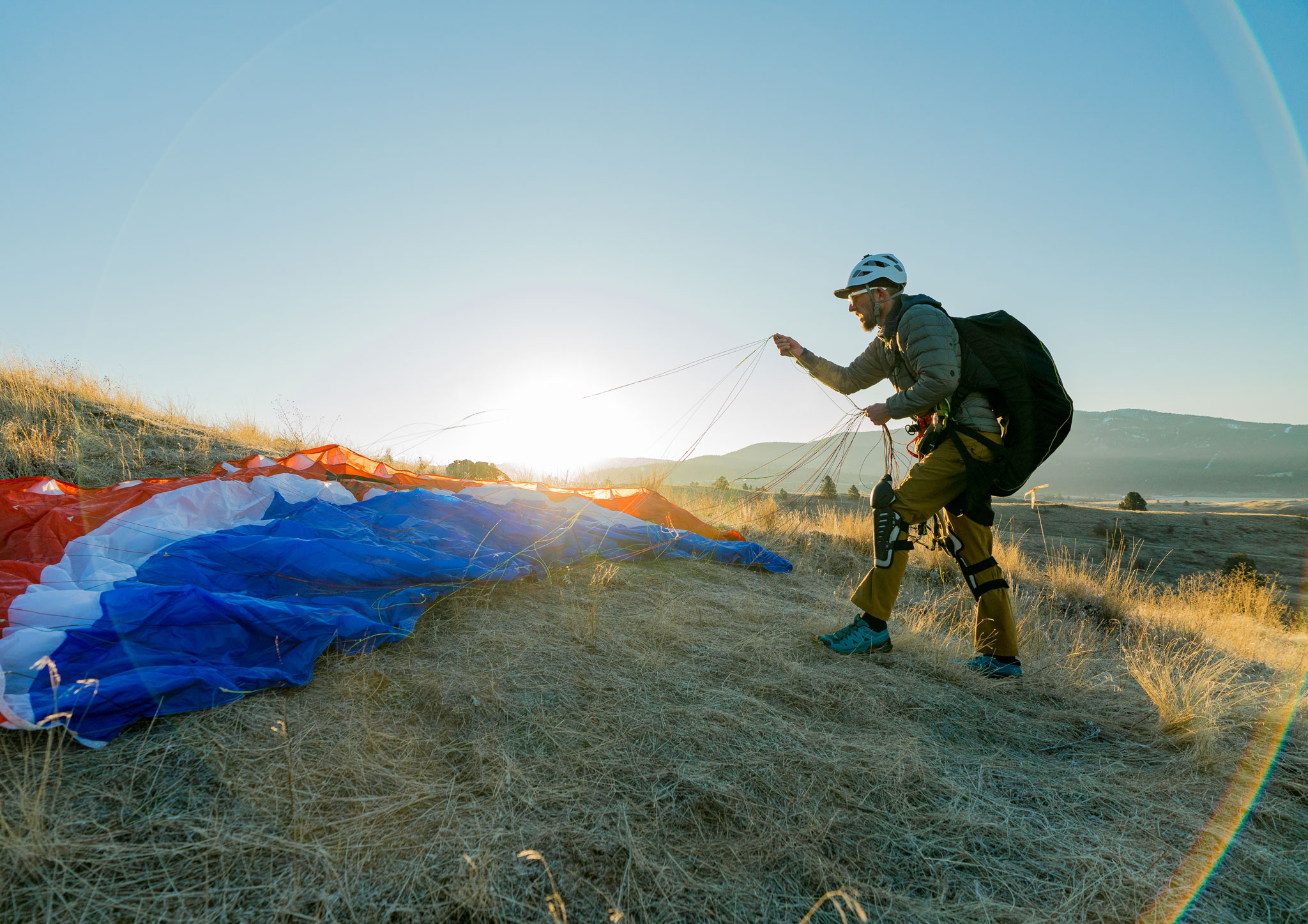
Whether it’s flying from a mountain above the Eastern Oregon desert or traveling with buddies to Southern California in the winter to fly at a Speedflying Park, or even the short flights I get at our local practice hill, I have always been blessed with amazing experiences.
Ready to launch
The sun crested the ridge above the launch, and I waited as the cold downslope winds began to abate. My wing was laid out and ready. I tried calming the nerves I was feeling. Launching is the most dangerous moment in speedflying, followed by the landing.
Having recently dropped down in size from a 15-meter wing to a newer 13-meter wing, I was still fine tuning my launch technique. The sun broke across the ground in front of me and I called Chris, “this is the 5-minute warning.”
I strapped into my harness, checked and double checked the connections. I felt the slightly warmer wind gently move up the slope towards me. Taking the brake toggles in my hand I positioned myself for launch, took a deep breath and began running forward.

The wing came up above me as I ran down the slope, I felt the tug of the wing as it gained flying speed, pulled gently on the brakes and I was airborne. As soon as I was in the air I relaxed and focused on learning the intricacies of this new wing.
Two minutes and 30 seconds later, and 1,400 feet lower, I was on the valley floor. I called Chris and celebrated a successful flight. As Chris began the “slow way” off the mountain, I laid in the morning sun and listened to the nearby river, fully immersed in the soul glow achieved by a successful adventure. N
As Featured In: Summer/Fall 2023


